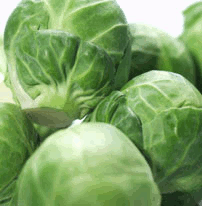Are the carbs in vegetables the same cooked or uncooked?
Carbs (carbohydrates) in vegetables can definitely be affected by cooking. They are not affected as quickly or as extensively as phytonutrients like flavonoids or carotenoids, but they are still subject to changes from baking, boiling, steaming, and roasting. The exact impact of cooking on vegetables-and on other foods as well -depends on how long you cook them, how high a temperature you cook them at, and how much moisture you use when cooking them. But here are some basics about vegetables, cooking, and carbs that you should know.
Conversion of starch to sugar
Heat can help increase the rate at which vegetable starches get converted into vegetable sugars. A baked Russet potato, for example, will lose about 10% of its raw-form total starch content and convert that starch content into sugar. From a nutritional perspective, this loss of starch and increase in sugar is relatively small and not typically a cause for great concern. However, the baking of a starchy vegetable can also raise its glycemic index (GI) value. This increase in GI (often related to the conversion of starches to sugars) holds true for vegetables like potatoes, sweet potatoes, yams, plaintains, and carrots. A raw carrot typically has a GI value in the 15-20 range. A cooked carrot's GI will typically fall into the 35-50 range. (You can find a reliable list of GI values in the website established by David Mendosa and based on research at the University of Sydney in Australia at http://www.mendosa.com/gilists.htm.)
Changes in resistant starch
Research studies show definite changes in levels of resistant starch naturally occurring in vegetables (and other foods). Resistant starches are generally viewed as helpful carbohydrates that resist breakdown in the digestive tract long enough to reach the large intestine and support the metabolic needs of helpful bacteria and cells lining the large intestine. However, the precise relationship between vegetable cooking and resistant starch is not yet clear. In some cases, the cooking of vegetables has presented some very favorable results with respect to the amount of available resistant starches. In other cases, no change in resistant starch levels has been determined to result from cooking. While the jury is still out in this area of research, look for future studies about the impact of cooking on the levels of resistant starch in vegetables and other foods.
Dry versus liquid heat
When vegetables are boiled in water, some of their sugars and starches are lost into the cooking water. When vegetables are roasted or baked in the oven, this loss of sugars and starches into water does not take place. For this reason, vegetables like boiled green beans will typically lose a small percent of both sugars and starches into the cooking water, whereas oven-roasted green beans will not. However, these changes in carbohydrate composition are once again relatively small and not usually a major factor in deciding about cooking method.
WHFoods Recommendations
When it comes to their carb content, vegetables can generally be enjoyed without problems in either cooked or raw form. Ratios of sugar to starch may change during cooking, as can amounts of available resistant starch and GI value. Among all of these factors, GI value may be the most important factor to consider for individuals who are following a diet that is focused on blood sugar control and insulin balance.






